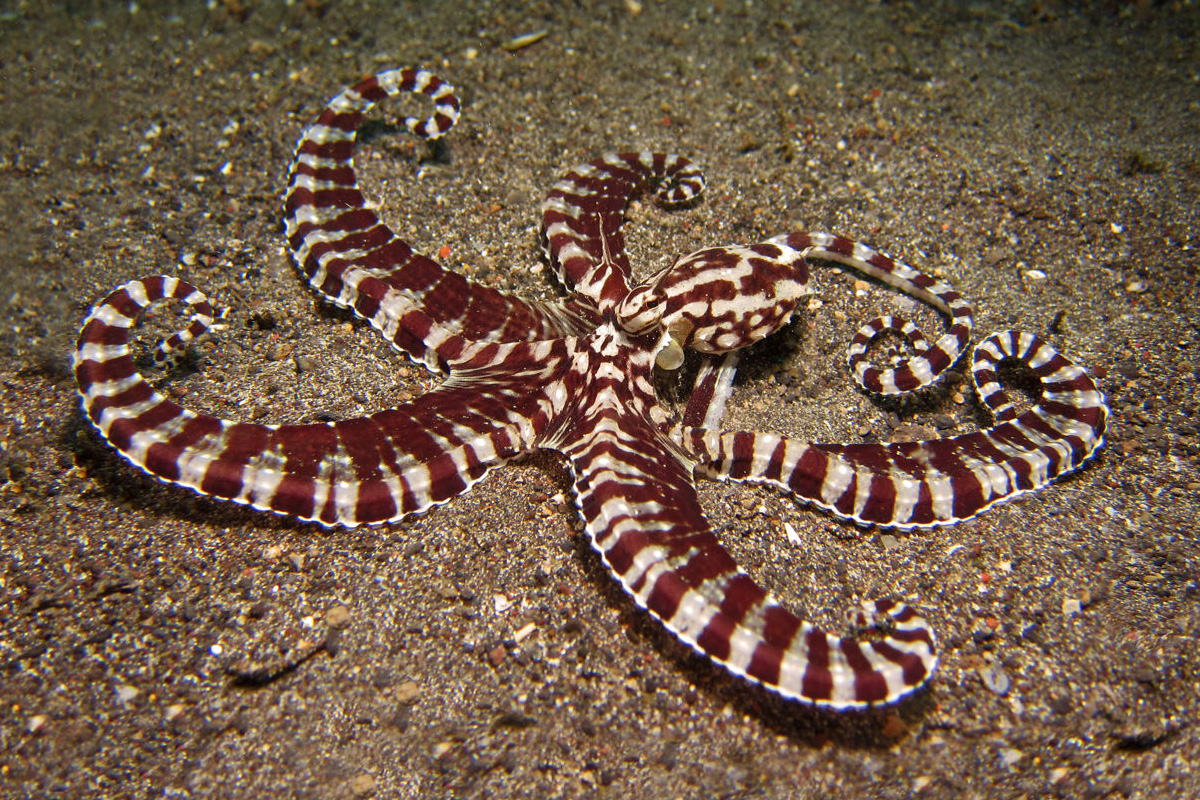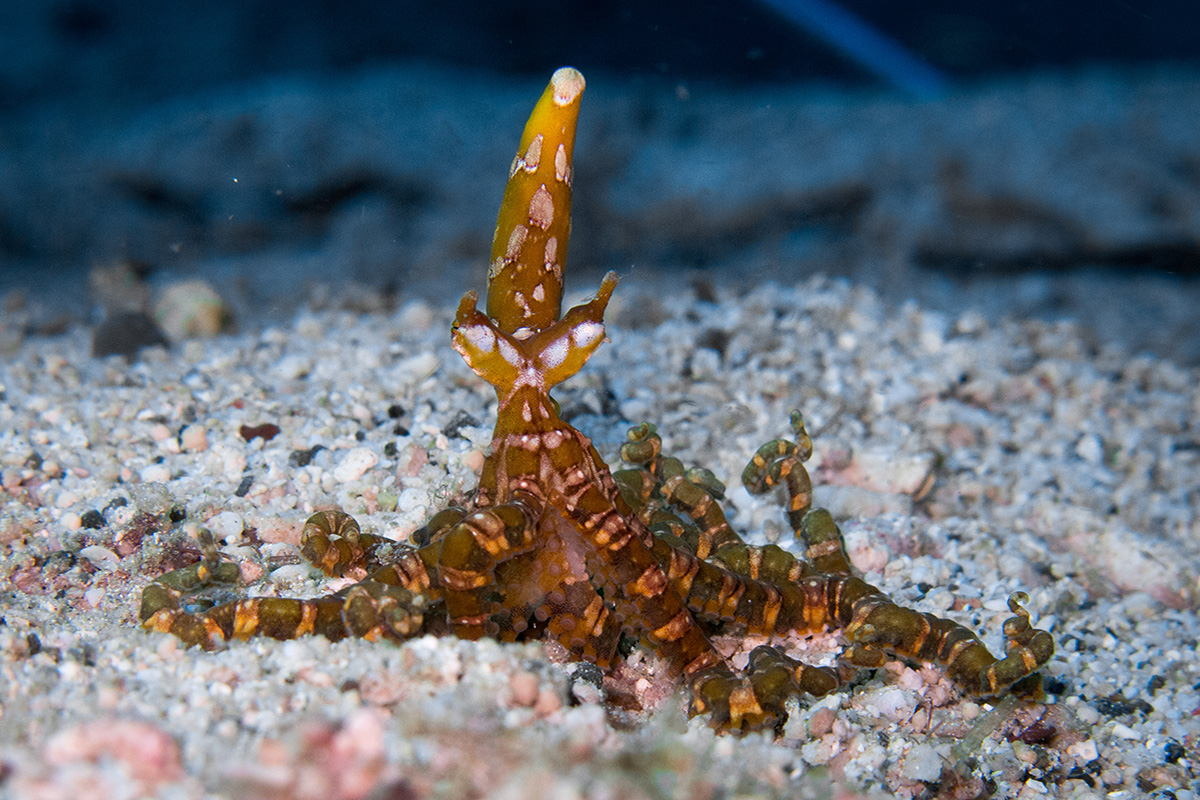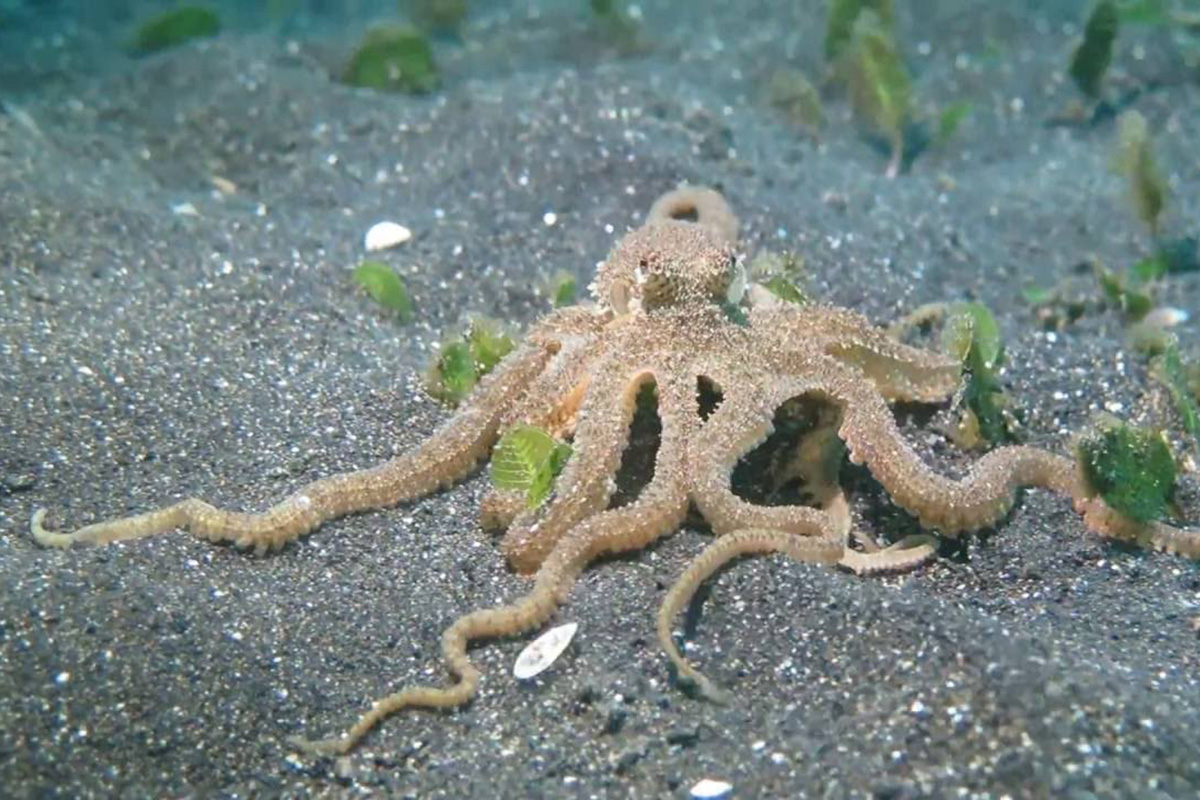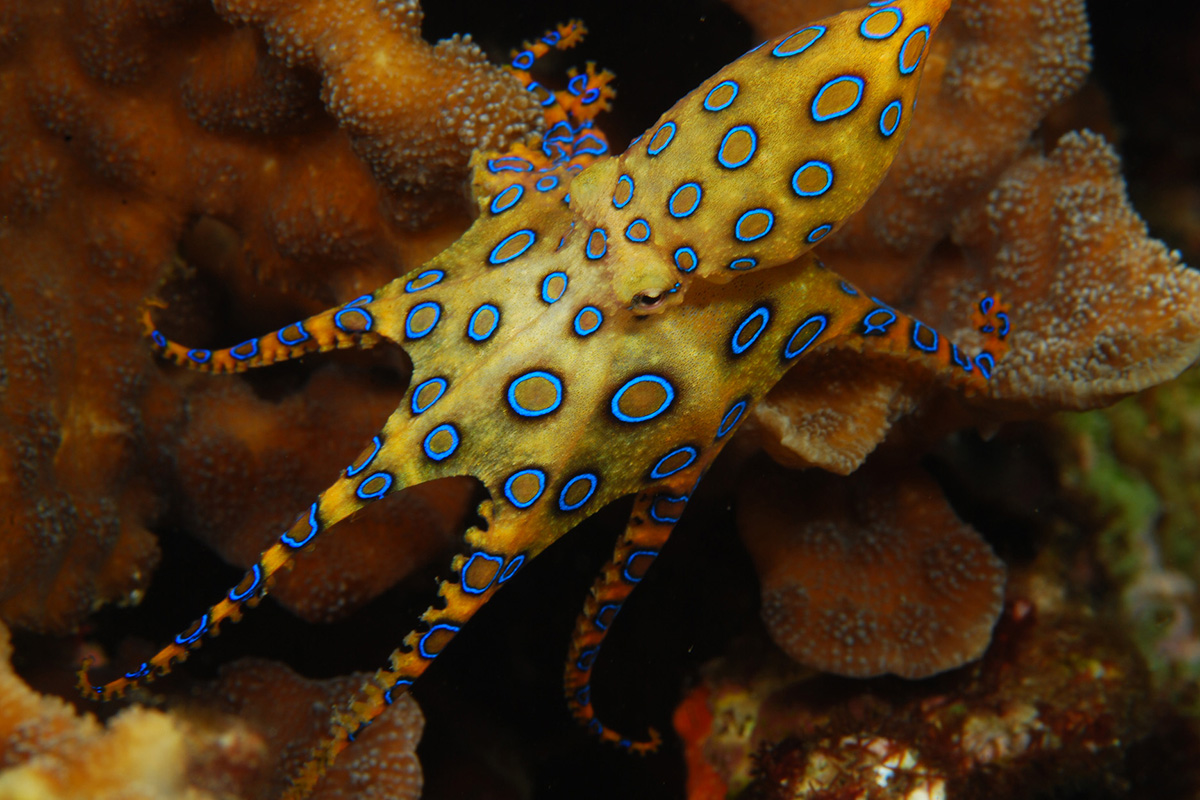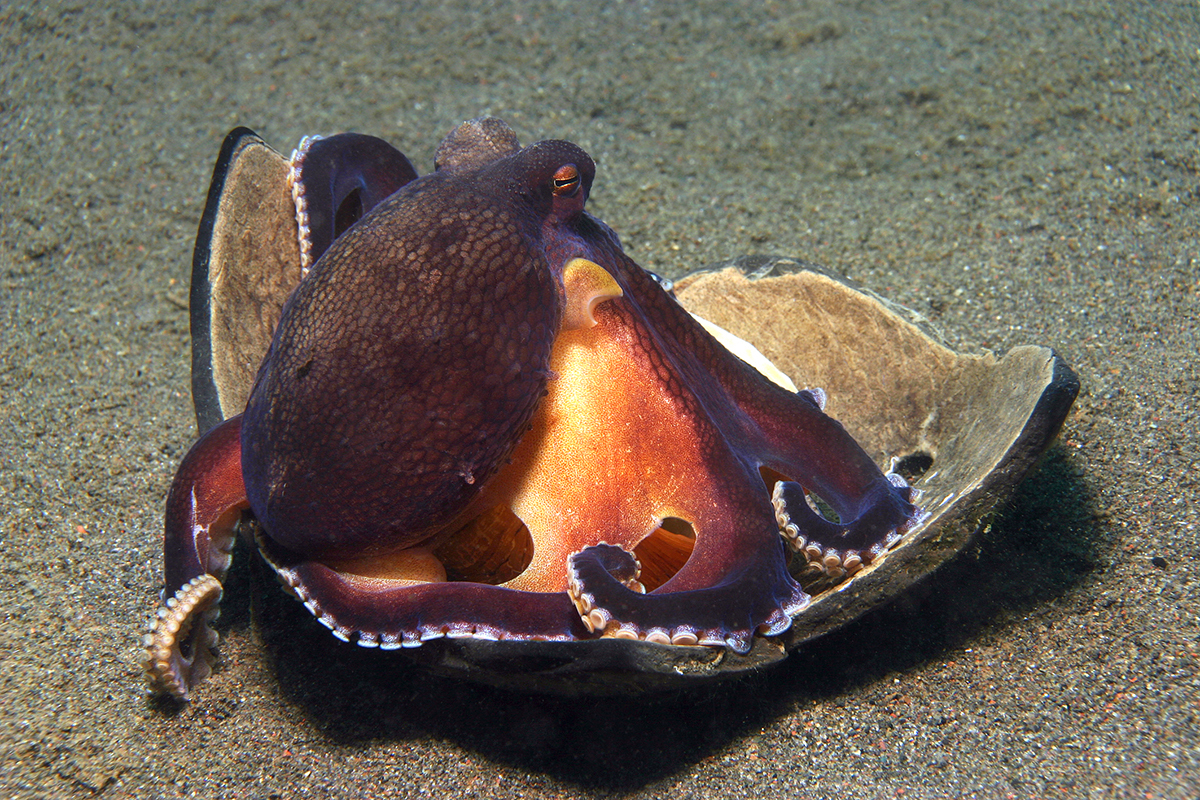The Incredible Octopuses of North Sulawesi
You probably know that North Sulawesi has some of the most incredible fish species anywhere in the world, but did you know there are at least 8 different species of octopus to see as well? Add these 8 to your list and see if you can spot any others while you’re diving around Gangga Island and the Bangka Archipelago.
1. Mimic Octopus
One of the most famous octopus species in the world is the mimic octopus. You may have seen videos of them posing as other species like sea snakes, crabs and flounder. This incredible ability to shape shift is amazing to watch on screen but even more so in real life.
The mimic octopus is quite small at only around 60cm including its arms, but Gangga Divers guides are great at knowing where to look for it. You might be expecting to see an octopus with striking white and brown stripes as they are usually photographed or filmed in their defensive colours. However, in its relaxed state it’s a lighter brown colour.
2. Wonderpus
Often mistaken for the mimic octopus, the wonderpus is another species that can change its body shape to look like other marine species. The 2 octopus species even have similar colouring. However, there are some distinct differences that you can look out for.
The first telltale sign is the eye stalks. Unlike the mimic, the wonderpus has elongated eye stalks that you might see peeking out of its sandy hiding spots. You should also take note of the colouring and markings. Wonderpus have a much more orangey tone and crisp orange-brown bands. These bands stretch all the way to the suckers. On the mimic octopus you’ll see white where the suckers are with no striped markings.
3. Long Arm Octopus
You may think every octopus is a long armed octopus but this one is specifically found only in the Indo-Pacific region. It’s sometimes referred to as the Indonesian long armed octopus. It’s actually a very small species with a body only around 6cm long and a total length of 15cm even with its long arms.
Look out for their burrows in the sand or in the reef that often have piles of debris outside the entrance. They have a sandy colouring and blend well with their habitat, so you’ll need a sharp eye to spot one while they are still.
4. Starry night octopus
This is one of the rarer species of octopus in North Sulawesi, but if you’re a fan of night diving you are more likely to spot it. This is quite a small-bodied octopus but can have arms up to 80cm long!
This species puts on a most impressive show when it’s threatened turning from reddish brown to having white spots all over its body. Look out for them on dives less than 15 metres deep with rubble or rocky areas where they like to hide out.
5. Blue Ring Octopus
This little guy has a bad reputation as being one of the most venomous animals in the sea. This is true but they are also quite docile unless provoked. Thankfully, they are very easy to identify and steer clear of as they have clear blue-black rings that become iridescent and pulsate when agitated.
You’re most likely to see these small octopi in rock pools and on shallower dives. They love to eat shrimp and hermit crabs so these are the perfect conditions for hunting.
6. Poison Ocelot Octopus
Like the blue ringed octopus this oddly named poison ocelot octopus or sometimes mototi octopus is a small species with blue rings on its body. However, they are easily distinguished by the 2 blue rings on either side of its body rather than many all over.
Keep a close eye out when you’re diving around Lembeh. Theis species loves rubble piles and hiding in cans and shells so these are the spots to look for them.
7. Coconut Octopus
This is one of the most impressive octopus species in North Sulawesi both in brains and brawn. Named after their habit of hiding in coconut husks and even carrying around their shelters under their mantle so they can hide anywhere they go. They are also fantastic at using tools like sticks and pieces of debris to safeguard themselves against predators.
Look out for this solid looking brown-bodied octopus with a network of fine dark lines. However, they also have a remarkable ability to change colour from their natural brown to bright white and a range of blues.
8. Hairy Octopus
Lastly, the rare hairy octopus. This is a tiny octopus species – the largest specimens measuring just 10cm long.
As its name suggests it’s quite hairy in appearance and is great at blending into seaweed and rubble patches. Its colouration ranges from brownish red to white and cream, which can make them look like a totally different species. Spot one of these on a dive and you’ll be thrilled with such a great species to check off your list.
8 species of 8-legged creatures are ready to be discovered and you might even find a species that isn’t even catalogued yet! Get a dive trip to North Sulawesi booked and keep your eyes peeled. If you have any questions about these or other species you might see on dives from Gangga Island Resort & Spa, pop a message in the comments box below!
